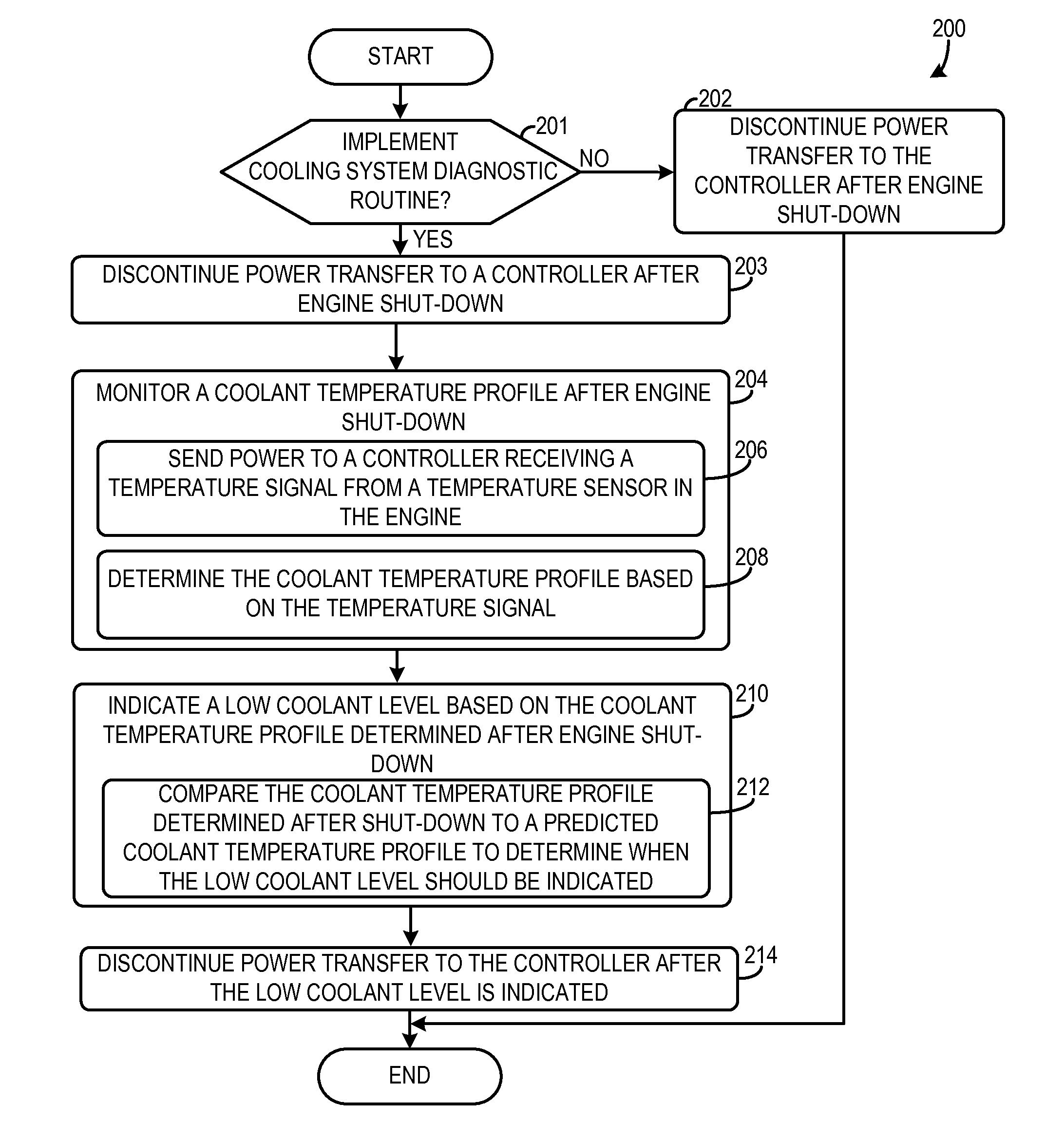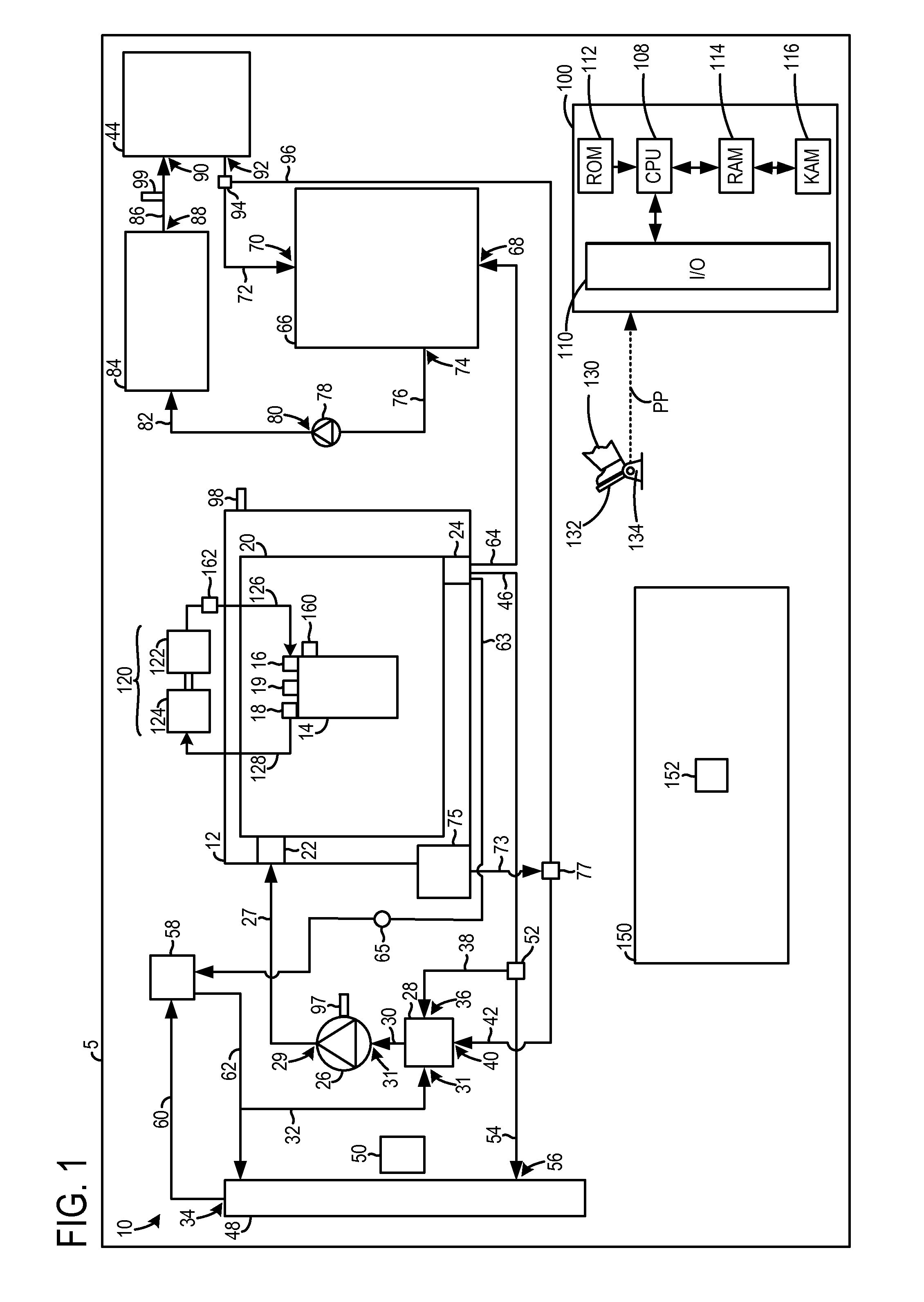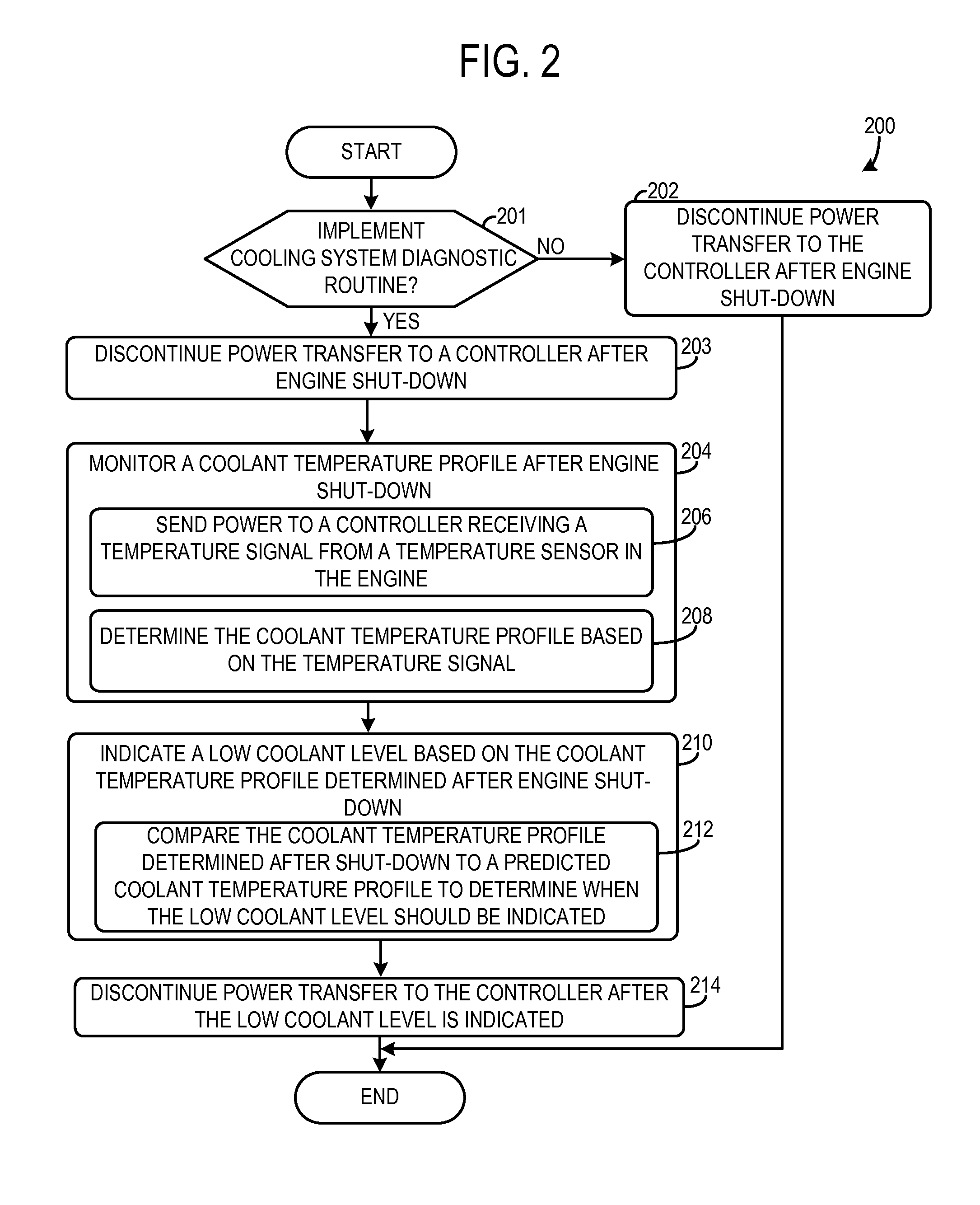Cooling system diagnostic method
a technology of engine cooling and diagnostic method, which is applied in the direction of machines/engines, mechanical equipment, transportation and packaging, etc., can solve the problems that leakage of cooling system disclosed in u.s. pat. no. 8, 052 may go undetected, and the engine overheating and component degradation, etc., to prevent engine overheating, increase engine efficiency, and increase hea
- Summary
- Abstract
- Description
- Claims
- Application Information
AI Technical Summary
Benefits of technology
Problems solved by technology
Method used
Image
Examples
Embodiment Construction
[0011]A method for operating an engine cooling system is described herein. The method may include monitoring a coolant temperature profile after engine shut-down and indicating a low coolant level based on the coolant temperature profile. In one example, the coolant temperature profile may be compared to a predicted temperature profile to ascertain if the coolant level is low. It will be appreciated that the predicted coolant temperature profile can be accurately determined, prior to monitoring the coolant temperature profile, based on empirical data entered into a decay equation (e.g., exponential decay equation) modeling a coolant curve to determine a time constant in the equation. However, other techniques may be used to calculate the predicted coolant temperature profile. This comparison enables even small coolant system leaks to be reliably determined due to the accuracy of the decay equation. As a result, cooling system diagnostics are improved.
[0012]FIG. 1 shows a schematic d...
PUM
 Login to View More
Login to View More Abstract
Description
Claims
Application Information
 Login to View More
Login to View More - R&D
- Intellectual Property
- Life Sciences
- Materials
- Tech Scout
- Unparalleled Data Quality
- Higher Quality Content
- 60% Fewer Hallucinations
Browse by: Latest US Patents, China's latest patents, Technical Efficacy Thesaurus, Application Domain, Technology Topic, Popular Technical Reports.
© 2025 PatSnap. All rights reserved.Legal|Privacy policy|Modern Slavery Act Transparency Statement|Sitemap|About US| Contact US: help@patsnap.com



